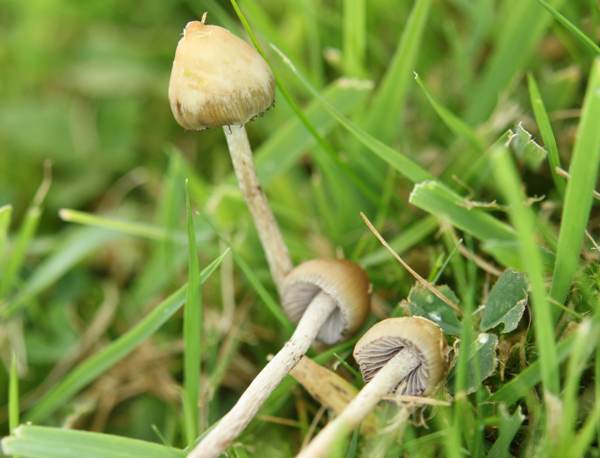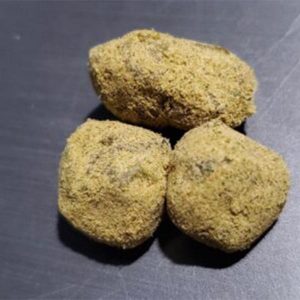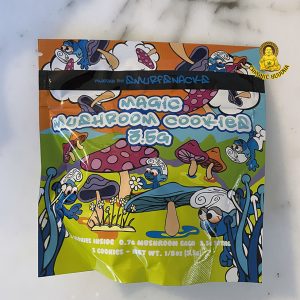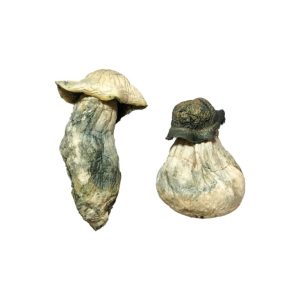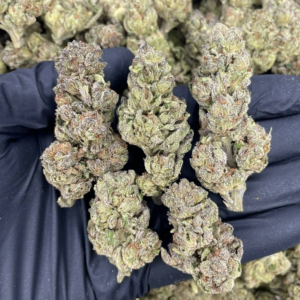£80.00 – £240.00
Buy Liberty Cap Mushroom
Liberty caps are type of psychedelic mushroom that is native to Europe. Liberty cap mushrooms have been use for centuries in religious and shamanic rituals. It is one of the most potent psychedelic mushrooms, with a strong visual and emotional effect. If you want a powerful psychedelic experience. then liberty caps are the mushrooms for you. These mushrooms can give you intense visual and emotional hallucinations and a deep. sense of connection with the natural world.
Liberty caps mushrooms are also known to cause laughter and euphoria. making them popular for recreational users. But, if you decide to use liberty caps, you must prepared for an intense experience. Make sure you are in a safe place where you feel comfortable and can relax. Have a trip sitter with you who can help if needed. Start with a low dose and increase it if desired. Most, listen to your body and mind, and respect your limits. Buy liberty cap mushroom here.
Psilocybe Semilanceata
Psilocybe semilanceata, also known as the liberty cap mushrooms. is a psychedelic mushroom that contains the psychoactive compounds psilocybin and baeocystin. It is one of the most potent psychedelic mushrooms. with an average dose of 2-3 grams providing a powerful trip. Indigenous peoples have used the mushroom in Mexico and Central America. for ceremonial and shamanic purposes. Recently, it has become popular as a recreational drug, particularly among young people. Psilocybe semilanceata is a small mushroom with a conical or bell-shaped cap.
The caps are usually between 1 and 2 cm in diameter and have a smooth, silky surface. They are brown or reddish-brown, with a darker centre. The gills are narrow and spaced, and the stem is thin and fragile. Psilocybe semilanceata grows in moist, grassy areas such as meadows, fields, and lawns. It is throughout Europe, North America, and Asia. Psilocybin is a occurring psychedelic compound found in many species of mushrooms. including Psilocybe semilanceata. When ingested, psilocybin converted into psilocin. which handles most of the mushroom’s psychoactive effects. These effects of Oregon liberty caps include hallucinations. altered states of consciousness, and changes in perception. The results of psilocybin last for 4-6 hours, depending on the dose.
Where Liberty Cap Mushroom Grow
Where liberty cap mushrooms grow. there is often a perfect balance of sunlight and moisture. These conditions are essential for the growth of these delicate mushrooms. Liberty caps are present in many different habitats, including woods. meadows, and even on roadsides. While they are worldwide, liberty caps are most associated with North America. Many people believe that these mushrooms were first introduced to the continent by early settlers from Europe. Whether you’re an experienced mushroom hunter. or getting a start, finding liberty caps is a great way to enjoy the outdoors and get in touch with nature. be sure to take all the necessary precautions when collecting them. And remember, when in doubt, always consult a professional.
Liberty Caps Mushrooms Effects And Dosage
Suppose you’re considering taking liberty cap mushrooms, also known as psilocybin mushrooms. In that case, it’s essential to understand the potential risks and effects. While some people report feeling happy and euphoric after taking these mushrooms. others may experience adverse side effects like anxiety and paranoia. Also, the impacts of liberty cap mushrooms can vary depending on the individual. The potency of the mushroom and the person’s mood. mindset, and environment when taking them can all affect the experience. It’s also important to know that if used there is a risk of becoming addicted to liberty cap mushrooms.
If you decide to take liberty cap mushrooms, starting with a tiny dose and increasing is crucial. Be sure to be in a safe, comfortable environment and have a trusted friend or family member. Avoid taking these mushrooms if you are pregnant, breastfeeding. have mental health issues. or are taking any medications that could interact with them. Liberty cap mushrooms contain the psychoactive compound psilocybin. a Schedule I drug in the United States. This means it has a high potential for abuse and is not recognize as having any medical value. Psilocybin can cause hallucinations, changes in perception, and an altered state of consciousness. These effects last between four and six hours. Common side effects of liberty cap mushrooms include dizziness. nausea, vomiting, and muscle weakness. Buy liberty cap mushroom today.
Liberty Caps Similar Species
Other similar species of mushrooms that may be confuse with liberty caps include:
* Psilocybe stuntzii is present in the Pacific Northwest of North America. It has a different appearance, with a smaller and more conical cap.
* Psilocybe semilanceata, in Europe and North America. This species has a more pointy cap than the liberty cap.
* Psilocybe pelliculosa, which is in North America. This species has a browner cap than the liberty cap. If you are unsure whether a mushroom is a liberty cap, it is best to err on the side of caution and not eat it.
Liberty Caps in Literature
The name “Liberty Cap” seems appropriate, of the states of mind that a strong psilocybin experience can conjure. not to mention the resulting philosophies. But the name has a different, but no less revolutionary, origin. P. semilanceata takes its common name from the Phrygian cap, also known as the “Liberty Cap,” which it resembles.
The Latin word pileus means “cap,” and in mushroom taxonomy, it refers to the “cap” of a mushroom. In the late Roman Empire, free men (non-slaves) wore a soft felted cap called a pileus. When a slave given their freedom, they given a pileus as a symbol of their liberty and right to vote (if male).
The identification of the pileus with the Phrygian cap began in the 18th century when the pileus confused with the Phrygian cap. the Phrygian cap became a symbol of freedom and liberty as the “bonnet rouge” of the French Revolution. Referring to P. semilanceata as “Liberty caps”. began with the 18th-century practice of placing Phrygian caps on “Liberty poles,”. resembling the mushroom. In 1812, British poet Robert Southey. with fellow poet Samuel Taylor Coleridge, published a two-volume book Omniana. which included the following observation on the “Cap of Liberty”:
Liberty Cap Mushroom: What Does it Look Like?
Psilocybe semilanceata is a tall thin field mushroom. The cap is quite distinctive, with a pronounced papilla on top of a tall and slender cap. The stem is long and thin, enough to raise the cap above the grass to distribute its spores. Although delicate looking, these are tough mushrooms. and a common identification test is to twist the stem around your little finger to see if the stem breaks. In most cases, a Panaeolus or Conocybe stem will break, but Liberty Caps are very fibrous and should not snap.
Liberty caps have a cap that is approximately 5–25 mm (0.2–1.0 in) in diameter and a height of 6–22 mm (0.24–0.87 in). The cap can vary in shape from conical to bell-shaped. A distinctive feature is their prominent papilla (the nipple-shaped top of the cap). At maturity, the cap margin is straight and can become curled upwards. When moist, radial grooves (striations) can seen on the cap that corresponds. to the positions of the gills underneath.
A feature of Psilocybe spp. is their hygrophanous cap, and this is no different with P. semilanceata. The cap has a gelatinous layer called a separable pellicle; as this dries out. the cap can take on different colours depending on the moisture present. When the cap is moist, it can be pale brown to dark chestnut brown, often with a green-blue tinge. The pellicle can used as an identifying feature by breaking the cap and bending it back to reveal the layer. When the cap is dry, it becomes much paler, a light yellow-brown color, and the pellicle is no longer peelable
The cap has a gelatinous layer called a separable pellicle | Courtesy of Caine Barlow
The gills are narrow and crowded together. pale brown, but becoming dark grey to purple-brown as the spores mature. Their attachment to the stem is adnex, almost free. P. semilanceata reported to have a thin cobweb-like partial veil. but these are rarely visible. The partial veil can leave an annular zone on the stem, to which spores stick. leaving a darkened ring around the stem. The stem is slender, off-white turning yellow-brown, 45–140 mm (1.8–5.5 in) in length, and 1–3.5 mm (0.04–0.14 in) thick. usually equal thickness becoming thicker towards the base.
An important diagnostic feature of the genus Psilocybe is the blue bruising; Liberty Caps do not bruise as other Psilocybe spp. but will show some bruising on the base of their stem, hence the name “Blue Legs.” As with other Psilocybe spp. they have a farinaceous, flour or starch-like odor.
Liberty Caps are a mushroom with many names
Psilocybe semilanceata named Agaricus semilanceatus by Elias Magnus Fries. who wrote the first formal description in 1838 for his book Epicrisis Systematis Mycologici. The species moved to Psilocybe in 1871 by Paul Kummer. while reviewing Fries’s classifications. “Agaricus” had used as a broad umbrella name. so Kummer, revising Fries classification, moved many species to their own genus.
The Genus name “Psilocybe” derived from the Ancient Greek psilos (ψιλός). which means “smooth” or “bare,” and the Byzantine Greek kubê (κύβη), which means “head.” The species name “semilanceata” means half spear-shaped. from the shape of the pileus—the Latin semi (“half” or “somewhat”) and lanceata. from lanceolatus, meaning “spear-shaped”.
Sometimes how a species classified changes, resulting in the name of a species changing as well. The first person,. or people, to describe a species are always associated with the name given, with the year it renamed. In the case of Liberty caps, the formal name is: Psilocybe semilanceata (Fr.) P.Kumm. (1871). “Fr.” for Elias Magnus Fries, who first described the species. and “P.Kumm” for Paul Kummer, who assigned the species to Psilocybe in 1871.
Synonymity can be quite common among formal descriptions of fungi. Mycologists would often describe and name a species unaware that others had done the same in other locations. upon revision these would found, and associated as the same species. Psilocybe semilanceata is synonymous with Agaricus semilanceatus Fr. (1838), Geophila semilanceata (Fr.) Quél. (1886),and Panaeolus semilanceatus (Fr.) J.E.Lange (1936). If you ever read old field guides (there are many available to download on archive.org). it is helpful to keep in mind that the species mentioned may have since renamed.
Liberty Caps: Where are they found?
Psilocybe semilanceata is a temperate and sub-alpine species. It can found growing in both autumn and spring. in the northern hemisphere, growing in August to November and then May to June. In the southern hemisphere, it grows from April to May and then September to October. It tends to favor oceanic climates.
Liberty caps grow throughout Europe, where it assumed to be an endemic species. It thought that they introduced to other countries by the movement of livestock. It now occurs throughout the temperate regions of the northern and southern hemispheres. In the US and Canada, P. semilanceata occurs along the west coast. from British Columbia to California, and in some locations on the East Coast. from Nova Scotia to Newfoundland. In the Southern Hemisphere, P. semilanceata grows in Tasmania. south-east Australia, New Zealand, Chile, Argentina, and South Africa.
Psilocybe semilanceata found amongst grass growing in rich soil in temperate meadows. The mushrooms are often scattered, but in rich soil can found in dense groups. when growing in fields near farmyards, or well-manured pastures. Liberty Caps spread by animals and humans, either by foot traffic or dung. Although it does not grow on the dug. it is often found in pastures that have fertilized with sheep, cow, or horse manure.
Psilocybe semilanceata: How Strong are They?
Most Psilocybe species will bruise a variety of shades of blue or blue-green when damaged. but in the case of P. semilanceata, they only tend to bruise a small amount at the base of their stem. Given their tall thin stature. you would pass on these given a familiarity with other species such as Psilocybe cubensis. To look at, you wouldn’t think they are very potent. but by the percentage of dry weight, they are more potent than P. cubensis.
Psilocybe semilanceata has analyzed several times with variations in results. Tjakko Stijve and Thom Kuyper. in 1985 analysing a single specimen. found a concentration of psilocybin of 1.7 percent dry weight. with a concentration of baeocystin at 0.36 percent. In 1993, Gartz reported P. semilanceata having an average of 1.0 percent psilocybin by dry weight. ranging from 0.2-2.37 percent psilocybin. Analyzing specimens from the Pacific Northwest. Michael Beug and Jeremy Bigwood found psilocybin concentrations ranging from 0.62-1.28 percent. with an average of 1 percent. Psilocybe cubensis contain psilocin and psilocybin at 0.14-0.42 percent and 0.37-1.30 percent.
How to find Liberty Caps
Psilocybe semilanceata is very difficult to cultivate. so the primary way of obtaining mushrooms of the species is to forage for them. The best way to start is to get to know your target species. learn the description, their habitat, and the timing of the seasons. If you live in areas where they known to grow. fields, meadows, and lawns are the best places to look for Liberty Caps. especially if livestock have been present.
Must to know the lookalike species—species that may confused with your target species. The most common lookalike species is Protostropharia semiglobata. various Panaeolus spp, Conocybe spp, and Deconica spp. There are poisonous Psathyrella species that can . misidentified as Liberty Caps. Given the worldwide distribution of P. semilanceata. there will be different lookalike species on each respective continent and region. For example, in Europe. there is the poisonous species Cortinarius rubellus that has confused for P. semilanceata. the consumption of which may result in kidney failure. When foraging, be sure to take a field guide for your area, and have a couple of forums handy on your phone. Shroomery has the “Mushrooms hunting and identification” subforum. The iNaturalist app is also very useful and can provide identifications. when photos of the mushrooms uploaded. There are many Facebook groups, as well. so you can join one local to the area where you are foraging, and members will be aware of local lookalikes.
Description
Buy Liberty Cap Mushroom
Liberty caps are type of psychedelic mushroom that is native to Europe. Liberty cap mushrooms have been use for centuries in religious and shamanic rituals. It is one of the most potent psychedelic mushrooms, with a strong visual and emotional effect. If you want a powerful psychedelic experience. then liberty caps are the mushrooms for you. These mushrooms can give you intense visual and emotional hallucinations and a deep. sense of connection with the natural world.
Liberty caps mushrooms are also known to cause laughter and euphoria. making them popular for recreational users. But, if you decide to use liberty caps, you must prepared for an intense experience. Make sure you are in a safe place where you feel comfortable and can relax. Have a trip sitter with you who can help if needed. Start with a low dose and increase it if desired. Most, listen to your body and mind, and respect your limits. Buy liberty cap mushroom here.
Psilocybe Semilanceata
Psilocybe semilanceata, also known as the liberty cap mushrooms. is a psychedelic mushroom that contains the psychoactive compounds psilocybin and baeocystin. It is one of the most potent psychedelic mushrooms. with an average dose of 2-3 grams providing a powerful trip. Indigenous peoples have used the mushroom in Mexico and Central America. for ceremonial and shamanic purposes. Recently, it has become popular as a recreational drug, particularly among young people. Psilocybe semilanceata is a small mushroom with a conical or bell-shaped cap.
The caps are usually between 1 and 2 cm in diameter and have a smooth, silky surface. They are brown or reddish-brown, with a darker centre. The gills are narrow and spaced, and the stem is thin and fragile. Psilocybe semilanceata grows in moist, grassy areas such as meadows, fields, and lawns. It is throughout Europe, North America, and Asia. Psilocybin is a occurring psychedelic compound found in many species of mushrooms. including Psilocybe semilanceata. When ingested, psilocybin converted into psilocin. which handles most of the mushroom’s psychoactive effects. These effects of Oregon liberty caps include hallucinations. altered states of consciousness, and changes in perception. The results of psilocybin last for 4-6 hours, depending on the dose.
Where Liberty Cap Mushroom Grow
Where liberty cap mushrooms grow. there is often a perfect balance of sunlight and moisture. These conditions are essential for the growth of these delicate mushrooms. Liberty caps are present in many different habitats, including woods. meadows, and even on roadsides. While they are worldwide, liberty caps are most associated with North America. Many people believe that these mushrooms were first introduced to the continent by early settlers from Europe. Whether you’re an experienced mushroom hunter. or getting a start, finding liberty caps is a great way to enjoy the outdoors and get in touch with nature. be sure to take all the necessary precautions when collecting them. And remember, when in doubt, always consult a professional.
Liberty Caps Mushrooms Effects And Dosage
Suppose you’re considering taking liberty cap mushrooms, also known as psilocybin mushrooms. In that case, it’s essential to understand the potential risks and effects. While some people report feeling happy and euphoric after taking these mushrooms. others may experience adverse side effects like anxiety and paranoia. Also, the impacts of liberty cap mushrooms can vary depending on the individual. The potency of the mushroom and the person’s mood. mindset, and environment when taking them can all affect the experience. It’s also important to know that if used there is a risk of becoming addicted to liberty cap mushrooms.
If you decide to take liberty cap mushrooms, starting with a tiny dose and increasing is crucial. Be sure to be in a safe, comfortable environment and have a trusted friend or family member. Avoid taking these mushrooms if you are pregnant, breastfeeding. have mental health issues. or are taking any medications that could interact with them. Liberty cap mushrooms contain the psychoactive compound psilocybin. a Schedule I drug in the United States. This means it has a high potential for abuse and is not recognize as having any medical value. Psilocybin can cause hallucinations, changes in perception, and an altered state of consciousness. These effects last between four and six hours. Common side effects of liberty cap mushrooms include dizziness. nausea, vomiting, and muscle weakness. Buy liberty cap mushroom today.
Liberty Caps Similar Species
Other similar species of mushrooms that may be confuse with liberty caps include:
* Psilocybe stuntzii is present in the Pacific Northwest of North America. It has a different appearance, with a smaller and more conical cap.
* Psilocybe semilanceata, in Europe and North America. This species has a more pointy cap than the liberty cap.
* Psilocybe pelliculosa, which is in North America. This species has a browner cap than the liberty cap. If you are unsure whether a mushroom is a liberty cap, it is best to err on the side of caution and not eat it.
Liberty Caps in Literature
The name “Liberty Cap” seems appropriate, of the states of mind that a strong psilocybin experience can conjure. not to mention the resulting philosophies. But the name has a different, but no less revolutionary, origin. P. semilanceata takes its common name from the Phrygian cap, also known as the “Liberty Cap,” which it resembles.
The Latin word pileus means “cap,” and in mushroom taxonomy, it refers to the “cap” of a mushroom. In the late Roman Empire, free men (non-slaves) wore a soft felted cap called a pileus. When a slave given their freedom, they given a pileus as a symbol of their liberty and right to vote (if male).
The identification of the pileus with the Phrygian cap began in the 18th century when the pileus confused with the Phrygian cap. the Phrygian cap became a symbol of freedom and liberty as the “bonnet rouge” of the French Revolution. Referring to P. semilanceata as “Liberty caps”. began with the 18th-century practice of placing Phrygian caps on “Liberty poles,”. resembling the mushroom. In 1812, British poet Robert Southey. with fellow poet Samuel Taylor Coleridge, published a two-volume book Omniana. which included the following observation on the “Cap of Liberty”:
Liberty Cap Mushroom: What Does it Look Like?
Psilocybe semilanceata is a tall thin field mushroom. The cap is quite distinctive, with a pronounced papilla on top of a tall and slender cap. The stem is long and thin, enough to raise the cap above the grass to distribute its spores. Although delicate looking, these are tough mushrooms. and a common identification test is to twist the stem around your little finger to see if the stem breaks. In most cases, a Panaeolus or Conocybe stem will break, but Liberty Caps are very fibrous and should not snap.
Liberty caps have a cap that is approximately 5–25 mm (0.2–1.0 in) in diameter and a height of 6–22 mm (0.24–0.87 in). The cap can vary in shape from conical to bell-shaped. A distinctive feature is their prominent papilla (the nipple-shaped top of the cap). At maturity, the cap margin is straight and can become curled upwards. When moist, radial grooves (striations) can seen on the cap that corresponds. to the positions of the gills underneath.
A feature of Psilocybe spp. is their hygrophanous cap, and this is no different with P. semilanceata. The cap has a gelatinous layer called a separable pellicle; as this dries out. the cap can take on different colours depending on the moisture present. When the cap is moist, it can be pale brown to dark chestnut brown, often with a green-blue tinge. The pellicle can used as an identifying feature by breaking the cap and bending it back to reveal the layer. When the cap is dry, it becomes much paler, a light yellow-brown color, and the pellicle is no longer peelable
The cap has a gelatinous layer called a separable pellicle | Courtesy of Caine Barlow
The gills are narrow and crowded together. pale brown, but becoming dark grey to purple-brown as the spores mature. Their attachment to the stem is adnex, almost free. P. semilanceata reported to have a thin cobweb-like partial veil. but these are rarely visible. The partial veil can leave an annular zone on the stem, to which spores stick. leaving a darkened ring around the stem. The stem is slender, off-white turning yellow-brown, 45–140 mm (1.8–5.5 in) in length, and 1–3.5 mm (0.04–0.14 in) thick. usually equal thickness becoming thicker towards the base.
An important diagnostic feature of the genus Psilocybe is the blue bruising; Liberty Caps do not bruise as other Psilocybe spp. but will show some bruising on the base of their stem, hence the name “Blue Legs.” As with other Psilocybe spp. they have a farinaceous, flour or starch-like odor.
Liberty Caps are a mushroom with many names
Psilocybe semilanceata named Agaricus semilanceatus by Elias Magnus Fries. who wrote the first formal description in 1838 for his book Epicrisis Systematis Mycologici. The species moved to Psilocybe in 1871 by Paul Kummer. while reviewing Fries’s classifications. “Agaricus” had used as a broad umbrella name. so Kummer, revising Fries classification, moved many species to their own genus.
The Genus name “Psilocybe” derived from the Ancient Greek psilos (ψιλός). which means “smooth” or “bare,” and the Byzantine Greek kubê (κύβη), which means “head.” The species name “semilanceata” means half spear-shaped. from the shape of the pileus—the Latin semi (“half” or “somewhat”) and lanceata. from lanceolatus, meaning “spear-shaped”.
Sometimes how a species classified changes, resulting in the name of a species changing as well. The first person,. or people, to describe a species are always associated with the name given, with the year it renamed. In the case of Liberty caps, the formal name is: Psilocybe semilanceata (Fr.) P.Kumm. (1871). “Fr.” for Elias Magnus Fries, who first described the species. and “P.Kumm” for Paul Kummer, who assigned the species to Psilocybe in 1871.
Synonymity can be quite common among formal descriptions of fungi. Mycologists would often describe and name a species unaware that others had done the same in other locations. upon revision these would found, and associated as the same species. Psilocybe semilanceata is synonymous with Agaricus semilanceatus Fr. (1838), Geophila semilanceata (Fr.) Quél. (1886),and Panaeolus semilanceatus (Fr.) J.E.Lange (1936). If you ever read old field guides (there are many available to download on archive.org). it is helpful to keep in mind that the species mentioned may have since renamed.
Liberty Caps: Where are they found?
Psilocybe semilanceata is a temperate and sub-alpine species. It can found growing in both autumn and spring. in the northern hemisphere, growing in August to November and then May to June. In the southern hemisphere, it grows from April to May and then September to October. It tends to favor oceanic climates.
Liberty caps grow throughout Europe, where it assumed to be an endemic species. It thought that they introduced to other countries by the movement of livestock. It now occurs throughout the temperate regions of the northern and southern hemispheres. In the US and Canada, P. semilanceata occurs along the west coast. from British Columbia to California, and in some locations on the East Coast. from Nova Scotia to Newfoundland. In the Southern Hemisphere, P. semilanceata grows in Tasmania. south-east Australia, New Zealand, Chile, Argentina, and South Africa.
Psilocybe semilanceata found amongst grass growing in rich soil in temperate meadows. The mushrooms are often scattered, but in rich soil can found in dense groups. when growing in fields near farmyards, or well-manured pastures. Liberty Caps spread by animals and humans, either by foot traffic or dung. Although it does not grow on the dug. it is often found in pastures that have fertilized with sheep, cow, or horse manure.
Psilocybe semilanceata: How Strong are They?
Most Psilocybe species will bruise a variety of shades of blue or blue-green when damaged. but in the case of P. semilanceata, they only tend to bruise a small amount at the base of their stem. Given their tall thin stature. you would pass on these given a familiarity with other species such as Psilocybe cubensis. To look at, you wouldn’t think they are very potent. but by the percentage of dry weight, they are more potent than P. cubensis.
Psilocybe semilanceata has analyzed several times with variations in results. Tjakko Stijve and Thom Kuyper. in 1985 analysing a single specimen. found a concentration of psilocybin of 1.7 percent dry weight. with a concentration of baeocystin at 0.36 percent. In 1993, Gartz reported P. semilanceata having an average of 1.0 percent psilocybin by dry weight. ranging from 0.2-2.37 percent psilocybin. Analyzing specimens from the Pacific Northwest. Michael Beug and Jeremy Bigwood found psilocybin concentrations ranging from 0.62-1.28 percent. with an average of 1 percent. Psilocybe cubensis contain psilocin and psilocybin at 0.14-0.42 percent and 0.37-1.30 percent.
How to find Liberty Caps
Psilocybe semilanceata is very difficult to cultivate. so the primary way of obtaining mushrooms of the species is to forage for them. The best way to start is to get to know your target species. learn the description, their habitat, and the timing of the seasons. If you live in areas where they known to grow. fields, meadows, and lawns are the best places to look for Liberty Caps. especially if livestock have been present.
Must to know the lookalike species—species that may confused with your target species. The most common lookalike species is Protostropharia semiglobata. various Panaeolus spp, Conocybe spp, and Deconica spp. There are poisonous Psathyrella species that can . misidentified as Liberty Caps. Given the worldwide distribution of P. semilanceata. there will be different lookalike species on each respective continent and region. For example, in Europe. there is the poisonous species Cortinarius rubellus that has confused for P. semilanceata. the consumption of which may result in kidney failure. When foraging, be sure to take a field guide for your area, and have a couple of forums handy on your phone. Shroomery has the “Mushrooms hunting and identification” subforum. The iNaturalist app is also very useful and can provide identifications. when photos of the mushrooms uploaded. There are many Facebook groups, as well. so you can join one local to the area where you are foraging, and members will be aware of local lookalikes.
Additional information
| Weight | "7grams", "14grams", "28gram" |
|---|
